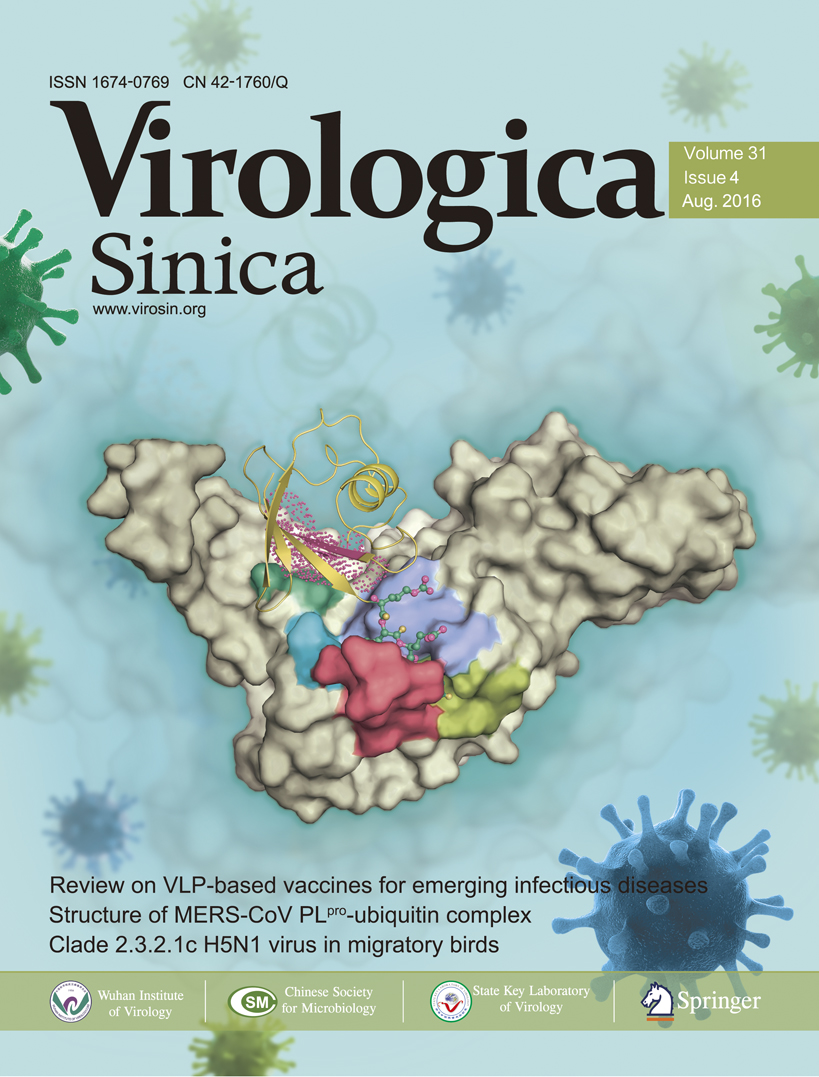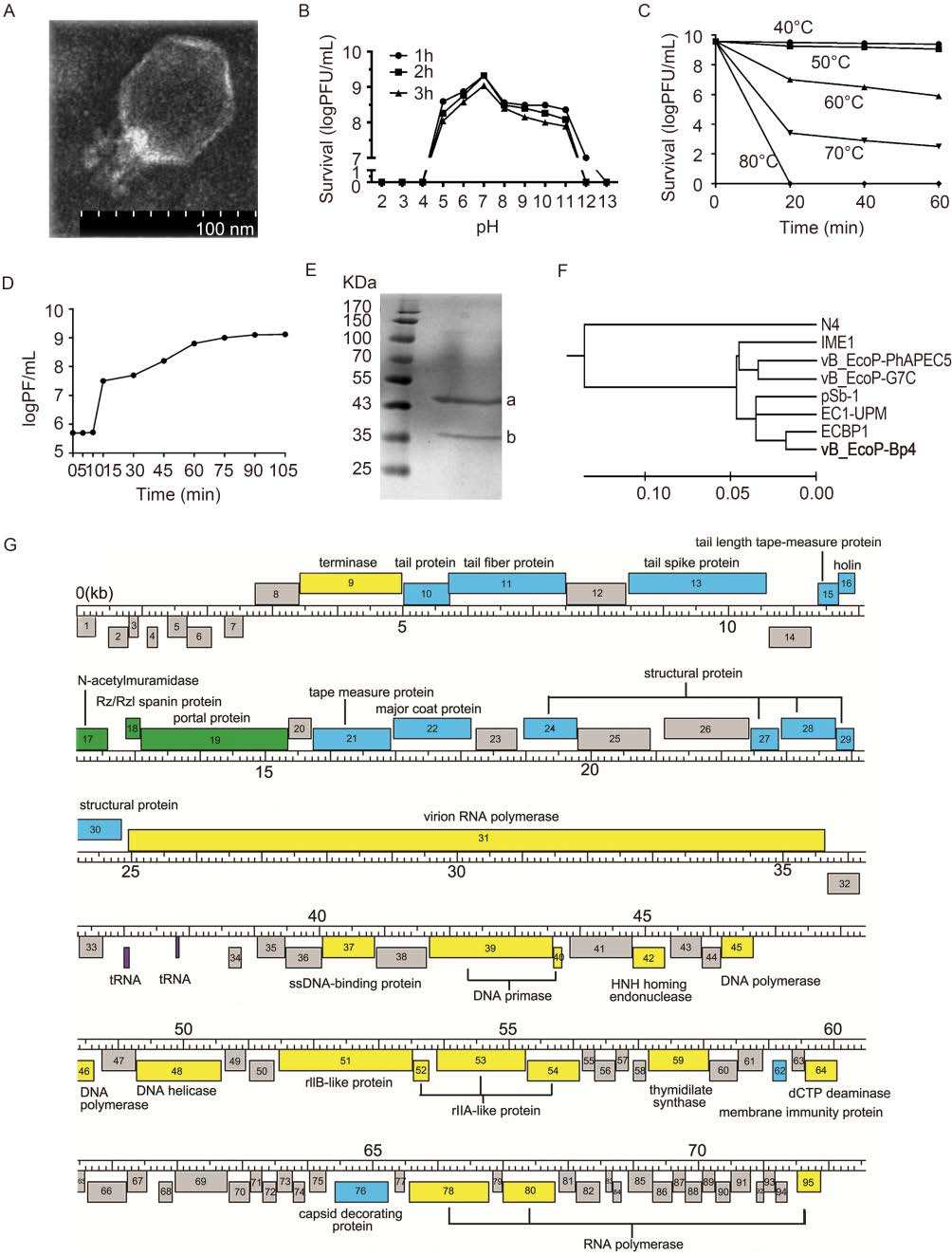Can Zhang, Yanxiang Ma, Ting Wang, Huzhi Sun, Guomin Lu, Huiying Ren.Characterization and complete genome sequence of vB_EcoPBp4, a novel polyvalent N4-like bacteriophage that infects chicken pathogenic Escherichia coli .VIROLOGICA SINICA, 2016, 31(4): 353-356.doi: 10.1007/s12250-016-3787-4
Citation:
Can Zhang, Yanxiang Ma, Ting Wang, Huzhi Sun, Guomin Lu, Huiying Ren.
Characterization and complete genome sequence of vB_EcoPBp4, a novel polyvalent N4-like bacteriophage that infects chicken pathogenic Escherichia coli .VIROLOGICA SINICA, 2016, 31(4)
: 353-356.
http://dx.doi.org/10.1007/s12250-016-3787-4
Characterization and complete genome sequence of vB_EcoPBp4, a novel polyvalent N4-like bacteriophage that infects chicken pathogenic Escherichia coli
-
College of Animal Husbandry and Veterinary Medicine, Qingdao Agricultural University, Qingdao 266109, China
-
Corresponding author:
Huiying Ren, renren0228@sina.com, ORCID: 0000-0003-0507-3228
-
-
Published Date:
10 August 2016
Available online:
01 August 2016
-
Abstract
Pathogenic Escherichia coli cause chicken colibacillosis, which is economically devastating to the poultry industry worldwide (Bagheri et al., 2014). Owing to increasing antibiotic resistance, phage therapy reagents have been developed to treat bacterial infections (Xu et al., 2015).
-

-
-
References
-
Bagheri M, Ghanbarpour R, Alizade H. 2014. Int J Food Microbiol, 177:16-20.
doi: 10.1016/j.ijfoodmicro.2014.02.003
-
Bailly-Bechet M, Vergassola M, Rocha E. 2007. Genome Res, 17:1486-1495.
doi: 10.1101/gr.6649807
-
Casas V, Rohwer F. 2007. Methods Enzymol, 421: 259-268.
doi: 10.1016/S0076-6879(06)21020-6
-
Choi KH, McPartland J, Kaganman I, et al. 2008. J Mol Biol, 378:726-736.
doi: 10.1016/j.jmb.2008.02.059
-
Kulikov E, Kropinski AM, Golomidova A, et al. 2012. Virology, 426:93-99.
doi: 10.1016/j.virol.2012.01.027
-
Gan HM, Sieo CC, Tang SG, et al. 2013. Virol J, 10: 308.
doi: 10.1186/1743-422X-10-308
-
Govind R, Fralick JA, Rolfe RD. 2006. J Bacteriol, 188: 2568-2577.
doi: 10.1128/JB.188.7.2568-2577.2006
-
Jun JW, Yun SK, Kim HJ, et al. 2014. Res Microbiol, 165: 671-678.
doi: 10.1016/j.resmic.2014.09.006
-
Li S, Fan H, An X, et al. 2014. PLoS One, 9: e85806.
doi: 10.1371/journal.pone.0085806
-
Lowe TM, Eddy SR. 1997. Nucleic Acids Res, 25: 955-964.
doi: 10.1093/nar/25.5.0955
-
Schito GC. 1974. J Virol, 13: 186-196.
-
Wittmann J, Klumpp J, Moreno Switt AI, et al. 2015. Arch Virol, 160:3053-3062.
doi: 10.1007/s00705-015-2609-6
-
Yano ST, Rothman-Denes LB., 2011. Mol Microbiol, 79: 1325-1338.
doi: 10.1111/mmi.2011.79.issue-5
-
Xu Y, Liu Y, Liu Y, et al. 2015. Virol Sin, 30: 11-18.
doi: 10.1007/s12250-014-3543-6
-
Zhang C, Li W, Liu W, et al. 2013. Appl Environ Microbiol, 79:5559-5565.
doi: 10.1128/AEM.01505-13
-
Proportional views

-















